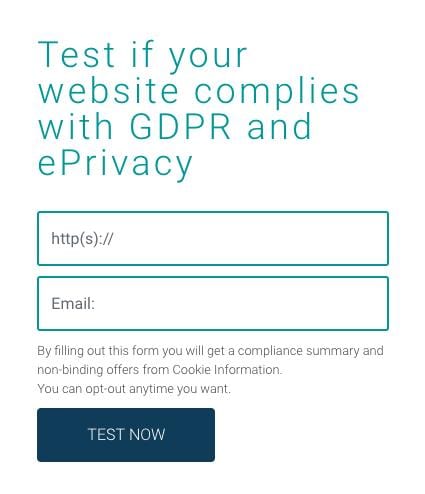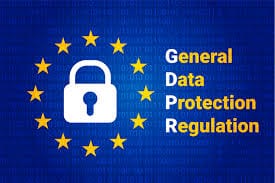In the past several years, discourses concerning the European Union’s General Data Protection Regulation (GDPR) have been all over the world. Users’ site is necessitated in the arm of this regulation to allow consumers in Europe to curb the action of cookies and trackers, which gather their personal information. And that is the nub of General Data Protection Regulation’s cookie assent as well as the fortune of digital facilities.
With that, the fundamentals of consent management will be covered in this write-up and to go in-depth in covering the topic of cookies under GDPR.
What is a Cookie?

A Cookie is a minute file, which is downloaded to the device of the users when they visit a certain website. Nowadays, the majority of websites utilize some kind of cookies. These files normally hold information like the website’s name and a distinctive user ID. Also, the majority of the commercial websites utilize them as they utilize a wide variety of impetus like website analytics where it counts the number of visitors and how they behave, aimed advertisement, and taking down users’ precedence or for validity.
What is GDPR Cookie Consent?

General Data Protection Regulation Cookie Consent is the time when consumers provide their informed, clear, and unambiguous consent on what cookies on their website they will permit to be operated and gather their information while going through their sites. A high level of granularity should specify an amenable GDPR Cookie Consent. For example, users can select some cookies compared to others wherein they are obligated and solely accept or refuse them.
In the arm of GDPR, website holders and operators have the lawful authority to assure that personal information is gathered and taken legitimately. A site that is not part of the European Union (EU) is asked to abide by the GDPR when it gathers information from the consumers under the EU. Though cookies are stated on one occasion in General Data Protection Regulation, consent concerning cookies is, however, the basis of acquiescence for sites with users who are part of the EU.
This is authorized since part of the natural steps for personal information to be gathered and taken part in on the Internet is by utilizing site cookies. With that, in the General Data Protection Regulation, cookie assent is considered as the frequent lawful foundation that permits websites to deal with personal information and utilize cookies.
![]() Complying GDPR Cookie Consent
Complying GDPR Cookie Consent

GDPR necessitates a location connected to the Internet to just gather personal information from consumers once they have provided their clear assent to the particular reasons for its utilization. With that, websites should abide by the following requirements set by GDPR Cookie Consent.
- Preceding and clear assent should be acquired before any active operation of cookies.
- Consents should be of a high level of granularity.
- Consents should not oblige the users.
- They must be removed easily, similar to how they are provided.
- They should be safely kept like lawful documentation.
- Consents should be renewable annually.
Usually, the GDPR Cookie agreement is gained on sites with the aid of banners in the cookie, which permit users to choose and undertake unquestionable cookies for the action to make them active compared to other websites.
European Data Protection Board’s instructions refine what accounts for authentic assent on sites in acquiescence with the General Data Protection Regulation. EDPB’s instructions narrate that the cookie banner on the website is not permitted to have checkboxes, and extended scrolling or perusing by consumers cannot be taken into consideration as authentic consent in dealing with personal information.
Users must candidly provide an understandable and positive action to designate their consents so that the website will activate the cookies and sorts out personal information.
Testing General Data Protection Regulation Cookie Acquiescence

Doing this procedure will know if the website complies with the General Data Protection Regulation’s Cookie Assent necessities. There are lots of other websites that offer free compliance tests.
To do this, solely input the link of the World Wide Web page on the domain and allow the free site to scan your site to discover every cookies and tracker until it reaches with the required number of subpages, which are part of the scanning procedure and to know if you pass with the necessities set by the GDPR’s Cookie Consent.
However, do not be frightened to know if your site has several undisclosed cookies and the like, which you considered as they are infamously hard to identify, taking into consideration to such a degree:
- 72% of packets of data on sites are filled in confidentially through dispute packets of data, which makes it hard to identify as the owner of the website.
- 18% of packets of data on sites are said to be Trojan horses. For instance, these packets, which are secreted as cavernous as other eight other packets of data, which let them become nearly unbearable to perceive without the help of technology that can do in-depth scanning.
- 50% of these horses will turn into among visitation, which means they may be another type of cookies on the whole.
With this, it can be said that consent management is not an easy task for a lot of businesses and website owners. Also, a lot of them ask how ordinary users with little understanding of the GDPR will take it if being questioned with several questions when it comes to consent. Will they be demented? Somehow, in the beginning, but it depends on each business to make consent form, which is easy to comprehend, thorough, and instructive in the same manner. Nonetheless, we are still on the affirmative side that these alterations will be advantageous for everyone.



